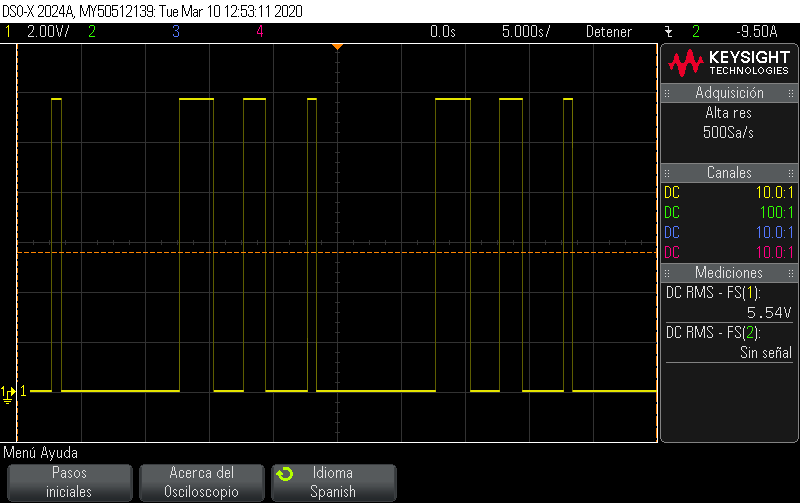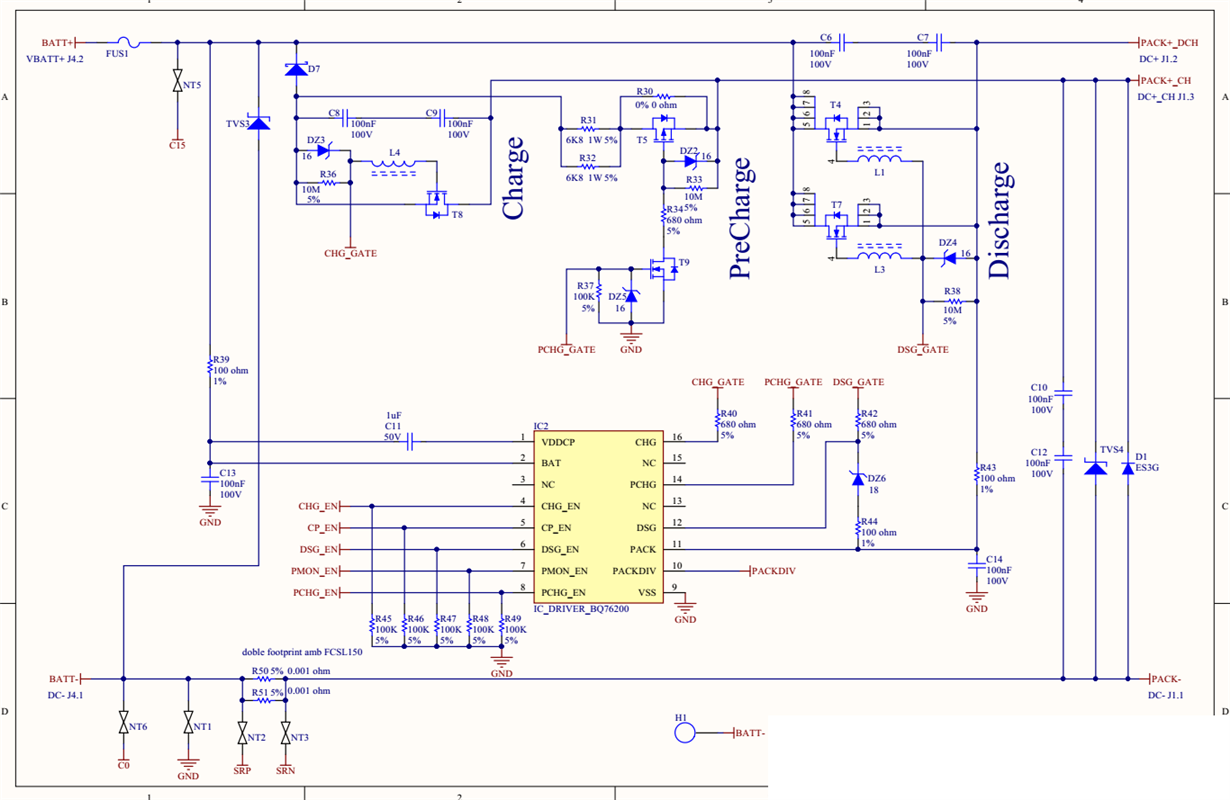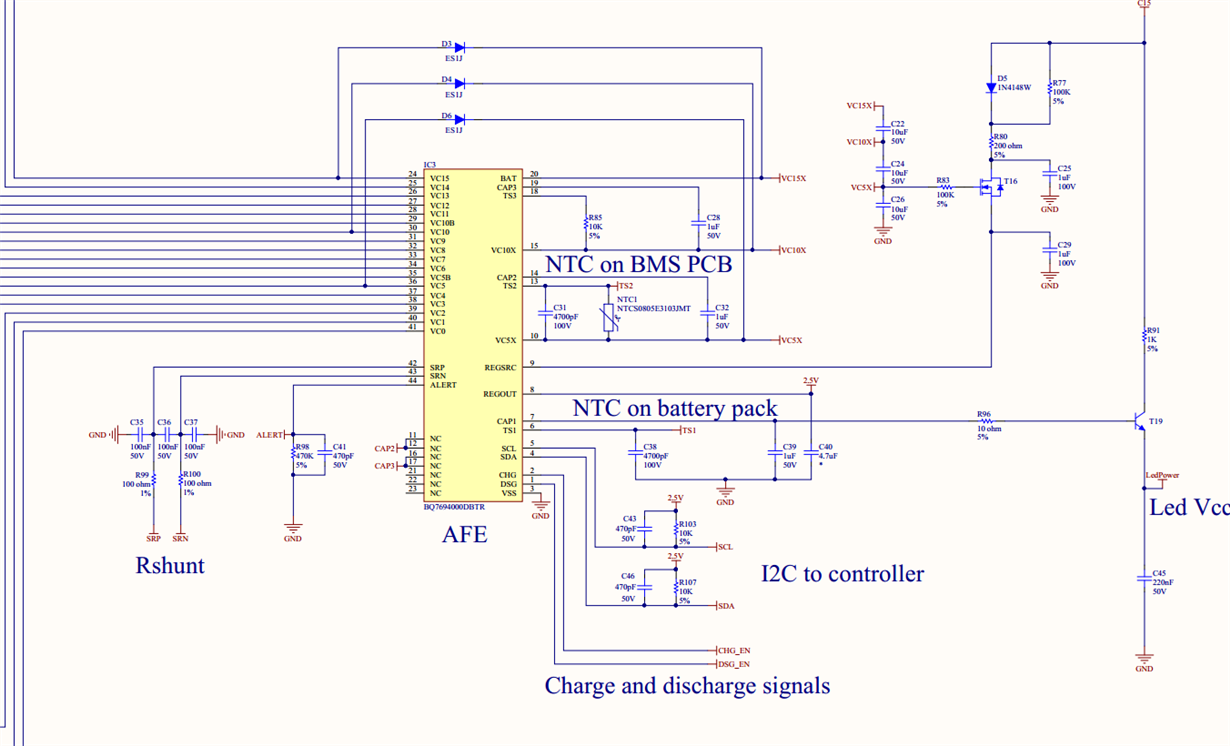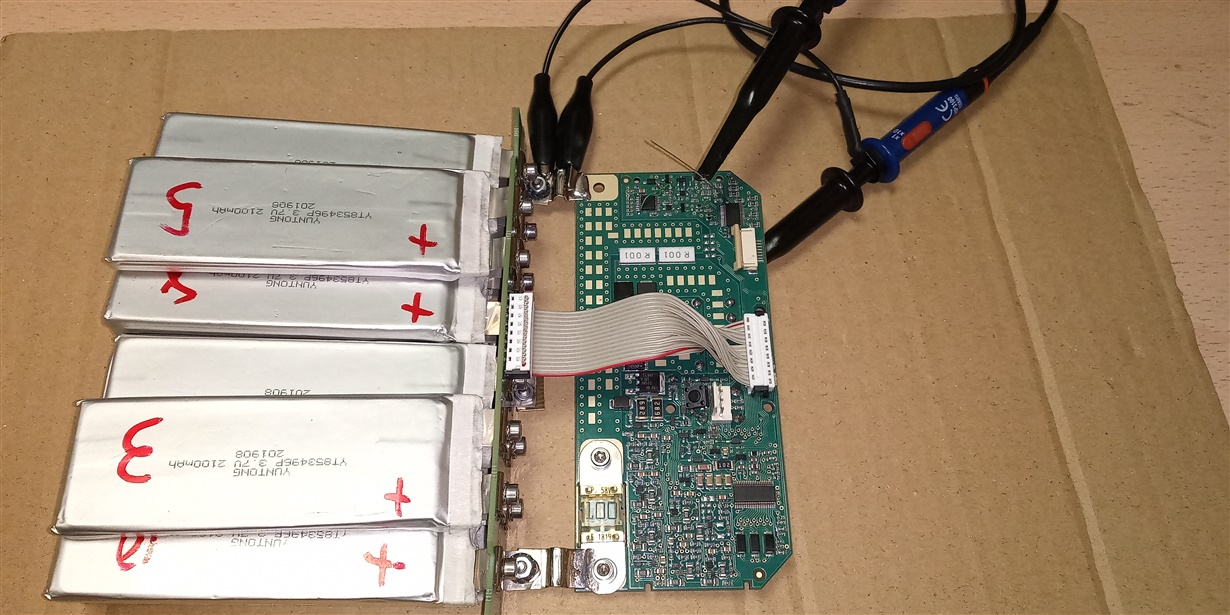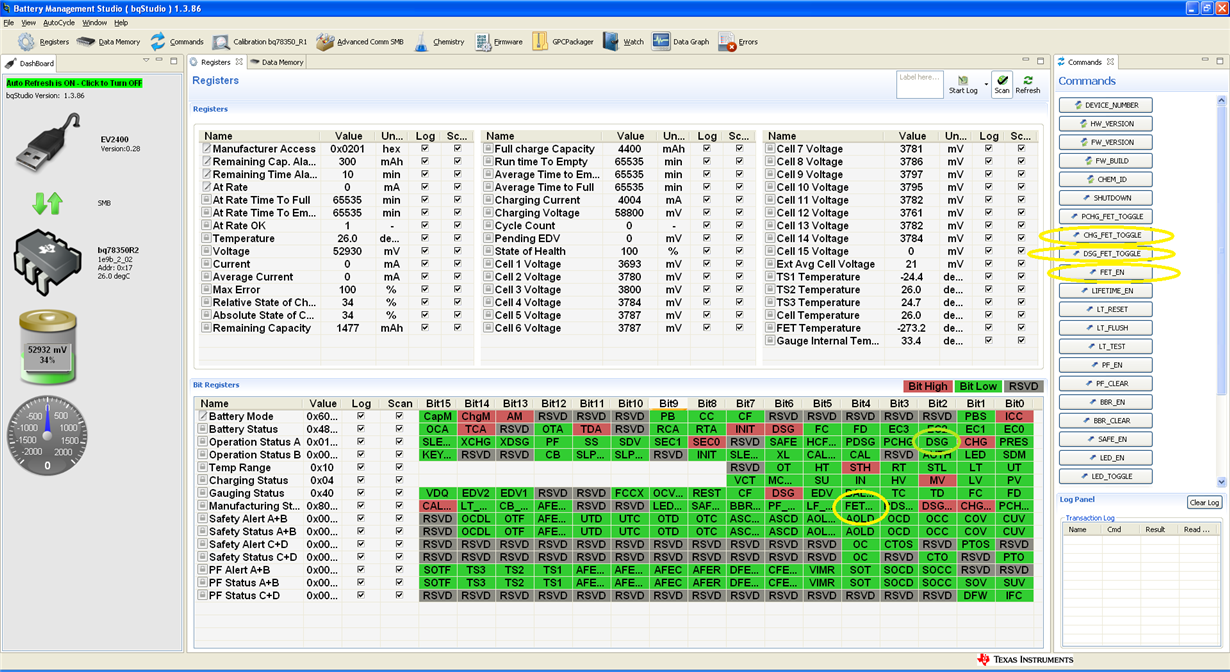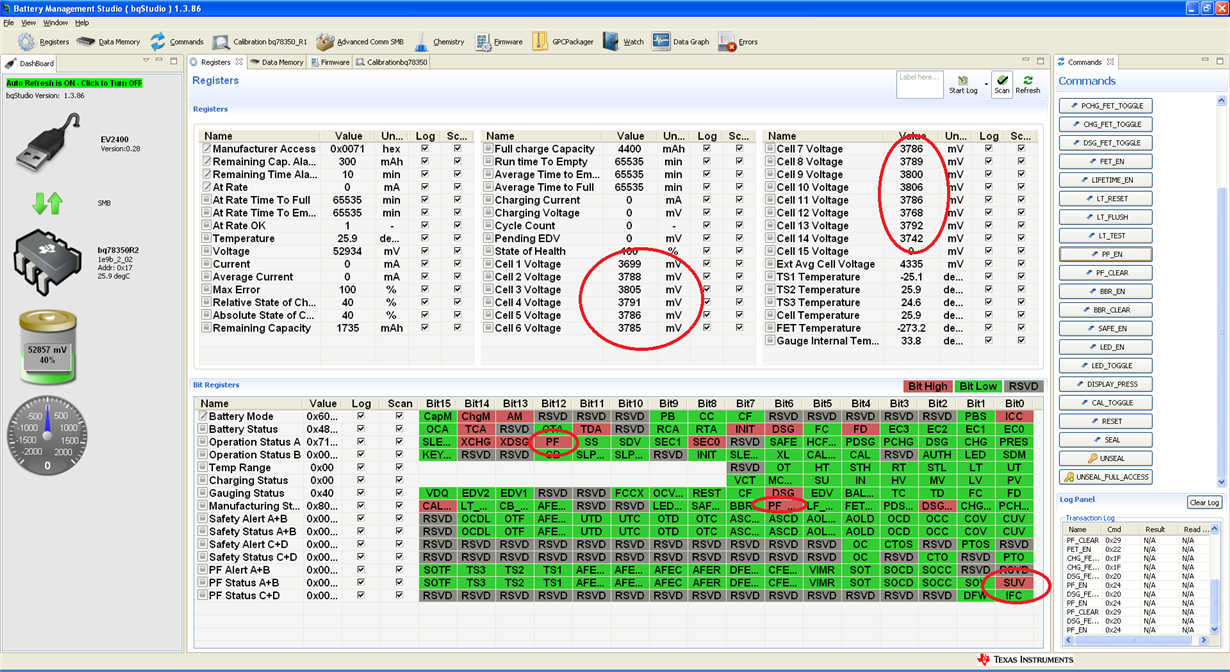Other Parts Discussed in Thread: BQSTUDIO, BQ78350, BQ76200,
Hi there,
I have been working with the BQ76940EVM. I have updated the R2 firmware and the evaluation board works fine. Via bqStudio, when the “FET_EN” is activated, the CHG and DSG transistor are ON fixed. When the “FET EN” is released the transistor are OFF and can be controlled via the “CHG_FET_TOGGLE” and “DSG_FET_TOGGLE”. Works fine. Nevertheless,
I’m developing my own BMS based on this EVM:
- BQ7694000 14S1P. The same device.
- BQ78350 firmware R2. The same device and firmware.
- BQ76200 with charge and discharge path independent. This is the main difference respect the EVM.
The problem is this:
When I activate the “FET_EN” then the DSG and CHG signals are OFF all the time. WHY?
When I deactivated the “FET_EN” and trigger “CHG_FET_TOGGLE” and “DSG_FET_TOGGLE”, the CHG transistor is fixed ON (it’s ok) BUT the DSG transistor is activated BUT just a moment, in fact is activated and deactivated by itself in a loop. Please have a look to the picture. Is the DSG_EN signal from BQ7694000 to the BQ76200. The signal is ON/OFF every second more or less.
Why?
Seems something wrong with DSG_EN signal, the BQ7694000 makes commute in a loop. Why?
Attach some schematic as well.
thanks a lot


